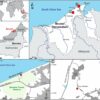A cruel consequence of advanced cancer is the profound apathy many patients experience as they lose interest in once-cherished activities. This symptom is part of a syndrome called cachexia, which affects about 80% of late-stage cancer patients, leading to severe muscle wasting and weight loss that leave patients bone thin despite adequate nutrition.
This loss of motivation doesn’t just deepen patients’ suffering, it isolates them from family and friends. Because patients struggle to engage with demanding therapies that require effort and persistence, it also strains families and complicates treatment.
Doctors typically assume that when late-stage cancer patients withdraw from life, it is an inevitable psychological response to physical deterioration. But what if apathy isn’t just a byproduct of physical decline but an integral part of the disease itself?
In our newly published research, my colleagues and I have discovered something remarkable: Cancer doesn’t simply waste the body – it hijacks a specific brain circuit that controls motivation. Our findings, published in the journal Science, challenge decades of assumptions and suggest it might be possible to restore what many cancer patients describe as most devastating to lose – their will to engage with life.

Cancer can cause debilitating wasting.
ArtistGNDphotography/E+ via Getty Images
Untangling fatigue from physical decline
To unravel the puzzle of apathy in cancer cachexia, we needed to trace the exact path inflammation takes in the body and peer inside a living brain while the disease is progressing – something impossible in people. However, neuroscientists have advanced technologies that make this possible in mice.
Modern neuroscience equips us with a powerful arsenal of tools to probe how disease changes brain activity in mice. Scientists can map entire brains at the cellular level, track neural activity during behavior, and precisely switch neurons on or off. We used these neuroscience tools in a mouse model of cancer cachexia to study the effects of the disease on the brain and motivation.
We identified a small brain region called the area postrema that acts as the brain’s inflammation detector. As a tumor grows, it releases cytokines − molecules that trigger inflammation − into the bloodstream. The area postrema lacks the typical blood-brain barrier that keeps out toxins, pathogens and other molecules from the body, allowing it to directly sample circulating inflammatory signals.
When the area postrema detects a rise in inflammatory molecules, it triggers a neural cascade across multiple brain regions, ultimately suppressing dopamine release in the brain’s motivation center − the nucleus accumbens. While commonly misconstrued as a “pleasure chemical,” dopamine is actually associated with drive, or the willingness to put in effort to gain rewards: It tips the internal cost-benefit scale toward…



